In this second installment of our series, “Cuisines from the World to New York,” we continue our look at some of the many international cultures mixed into Manhattan’s culinary scene.
This time, we take you through the dark soil of the Ukraine, to the deserts of the Middle East, to the colorful shores of the Dominican Republic, with a little Irish history and cuisine thrown into the mix.
Ukrainian Cuisine
The roots of Ukrainian cuisine are firmly grounded in that country’s rich black soil—chernozem. Being a major supplier of meat and dairy products, grains, nuts, eggs, vegetable oils and more has earned the country its nickname, “The Breadbasket of Europe.”
Ukrainian meals consist of many elements—vegetables such (potatoes, cabbage, beetroots, mushrooms), proteins (pork, beef, poultry, fish), fats, and carbohydrates (made with wheat, barley, rye).
A distinctive feature of Ukrainian food is its complex preparation which preserves juiciness and aroma. This is achieved by first boiling or frying, and then baking or stewing.
Pancakes, dumplings, pies and breads are a staple of Ukrainian cuisine, and are made with rye or wheat flour, poppy seeds, and honey.
One of the most popular Ukrainian dishes is Borscht: a spicy and colorful soup made with beets, cabbage, tomato, and either meat or fish. Other favorites include Pampushki (yeast buns served either savory or sweet), Vareniki (stuffed dumplings: cheese and potato or sauerkraut, mushroom), and cabbage rolls (stuffed with beef & rice served with tomato sauce).
Sample these and many other Ukrainian specialties at Veselka, Streecha, and Ukrainian East Village Restaurant.
Dominican Republic Cuisine
As a former colony of Spain, the Dominican Republic—and its cuisine—has been shaped by Spain’s culture, along with Africa, the Caribbean, and to a lesser extent, China and the Middle East. You will see similar cuisine in the neighboring islands of Cuba and Puerto Rico.
Dominican Republic cuisine encompasses a full spectrum of food groups: seafood, meats, corn, rice, legumes, exotic fruits (mangos, plantains, oranges), and root and starchy vegetables (yuca, potatoes, etc.).
Sofrito—a mixture of various peppers, apple cider vinegar, garlic, onions, tomato paste and seasonings—is a base flavoring of Dominican Republic cuisine.
A popular national dish in the Dominican Republic is rice and beans served with a meat and a salad. This is such a national treasure, it is sometimes referred to as “la Bandera” (the flag). Other dishes include Sancocho (a hearty soup/stew made with several kinds of meat and root vegetables), Mangu (boiled plantains with various toppings—scrambled eggs, fried cheese or salami, onions), and Chicharron (crispy pork with plantains, and lime).
Treat yourself to an exotic and flavorful meal in one of Manhattan’s vibrant Dominican restaurants including Sofrito, Malecon, and Leche y Miel Restaurant.
Middle-Eastern Cuisine
Often lumped in unceremoniously with all Mediterranean food, Middle-Eastern cuisine is distinct. It hails from the countries of Turkey, Yemen, Egypt, Iran, and more. Its cuisine is largely based on skewered meats, flatbreads and savory filled pastries.
Staples of Middle-Eastern food include foods legumes such as chickpeas, herbs and spices, and grains. Shawarma (rotating meat on a rotisserie) is made with lamb and chicken.
One of the most globally popular Middle-eastern dishes is hummus—a savory chickpea paste you can spread on anything and everything. Falafel is another familiar Middle-eastern specialty (ground chickpeas formed into balls or patties and deep-fried, served with sesame-based Tahini sauce). Lesser known dishes are M’jadarrah (lentil stew), Tabbouleh (salad with bulgur, tomatoes, parsley, mint), Umm ali (bread pudding), and Shanklish (cheese rolled in herbs).
Enjoy authentic Middle-eastern cuisine at Casa La Femme, Ravagh Persian Grill, Aba, and Yemen Café.
Irish Cuisine
When many people think of Irish food, they unfortunately imagine only corned beef and cabbage, Irish soda bread, and perhaps Shepard’s pie. While these are all truly scrumptious, Irish cuisine is much more than that, and often misunderstood—much like Irish history.
Irish cuisine prior to the British invasion of the 17th century consisted of lots of dairy, grains (wheat, barley, oats), meat (lamb, mutton, goat, pork, beef), and seafood. The British occupation of the whole of Ireland included seizing Irish lands to sell its agricultural and animal products—mainly to fund the English army. The potato was introduced at that time and Irish natives were forced to survive on this vegetable if they could cultivate it on the little land they were left with.
Unfortunately, much of Irish culture (including its cuisine) was ravaged and lost during this occupation and The Great Famine brought on by British occupation, and the epic failure of the potato crop. Fortunately, Irish cuisine has begun experiencing a renaissance of sorts in the 21st century, with traditional dishes taking on a more modern and fresh twist.
Along with the aforementioned dishes, some of Ireland’s most traditional dishes include Irish stew (made with mutton or lamb and root vegetables), Colcannon (mashed potatoes with cabbage or kale), Coddle (bangers, bacon, potatoes and onion), Salmon (baked, poached, smoked or grilled), Pork or Lamb Stew or Chops, and Irish Seafood Chowder (creamy and stew-like with lobster, prawns, clams, mussels, leeks, celery and fennel).
Enjoy a hearty and historical Irish meal in one of NYC’s many Irish restaurants: Neary’s, Carragher’s, St. James’ Gate Publick House, Lillies Victorian Establishment, and Molly’s.
The World at Your Fingertips
In Manhattan—arguably one of the world’s most international cities—The Marmara Park Avenue prides itself on offering international-style luxury and amenities to every one of our guests.
From luxury penthouses to spacious guestrooms with private terraces, to custom furniture and artwork, to our traditional Turkish Hammam, we bring the best the world has to offer to our guests here in Manhattan.
Learn more about our Turkish Hammam and other features of our Wellness Center.








